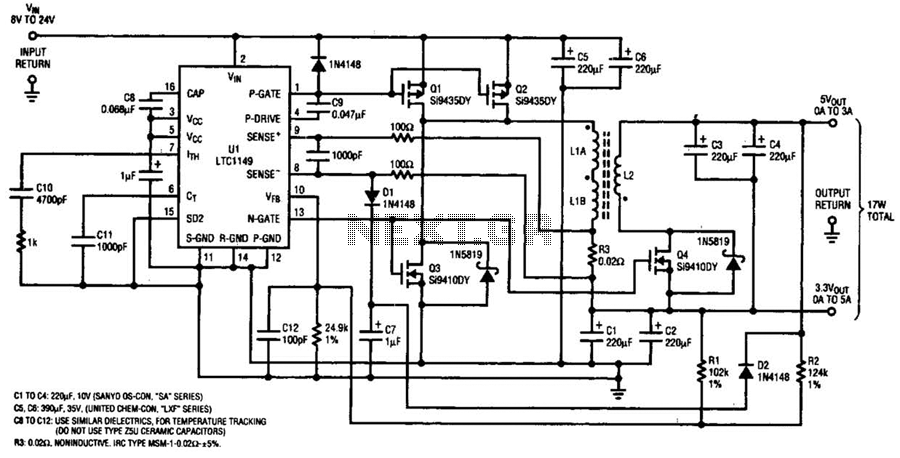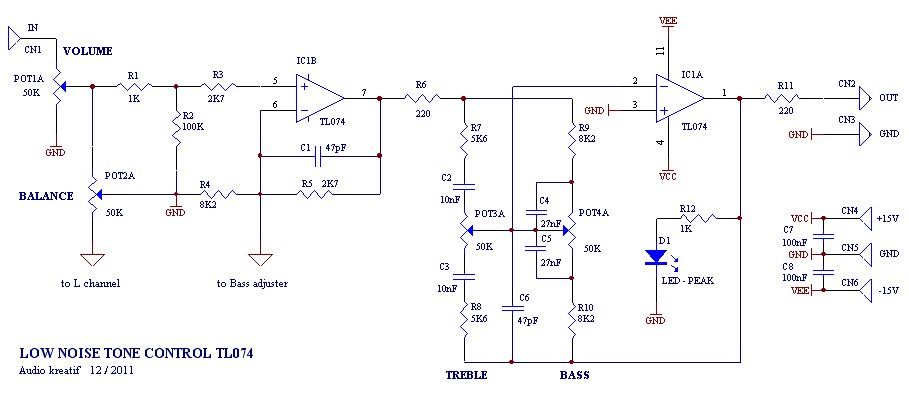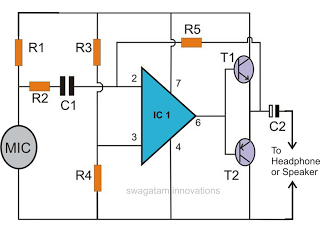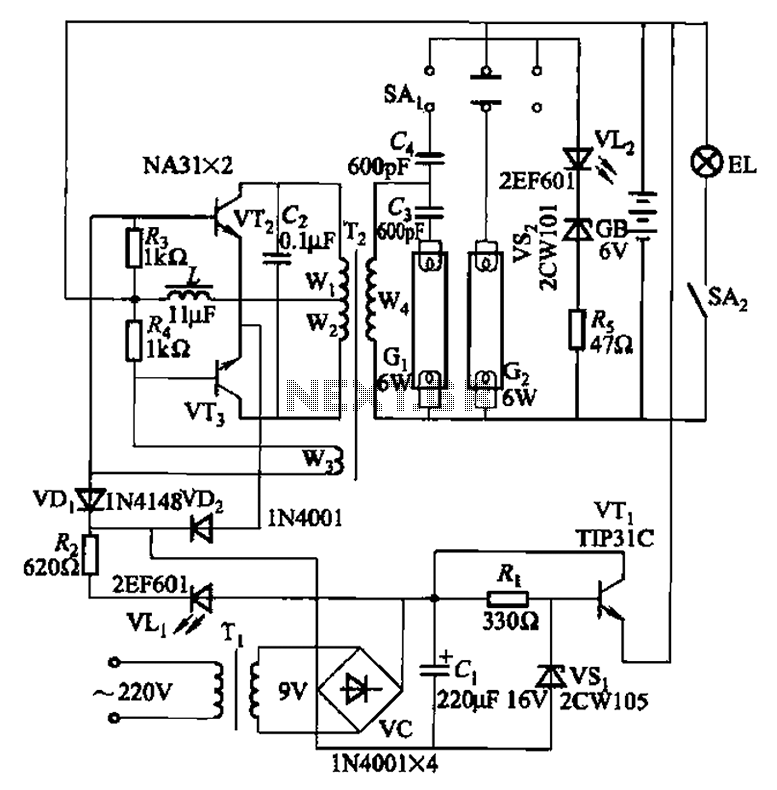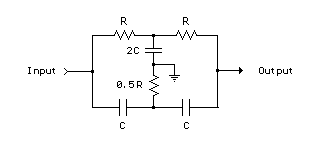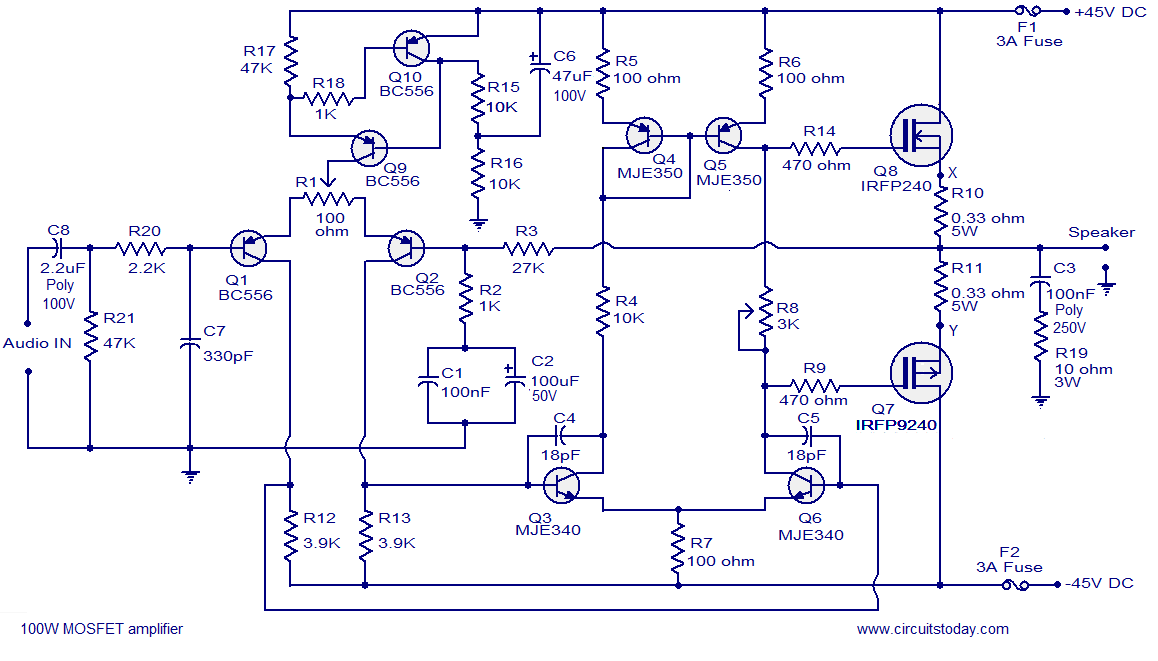
Audio Noise Filter circuit
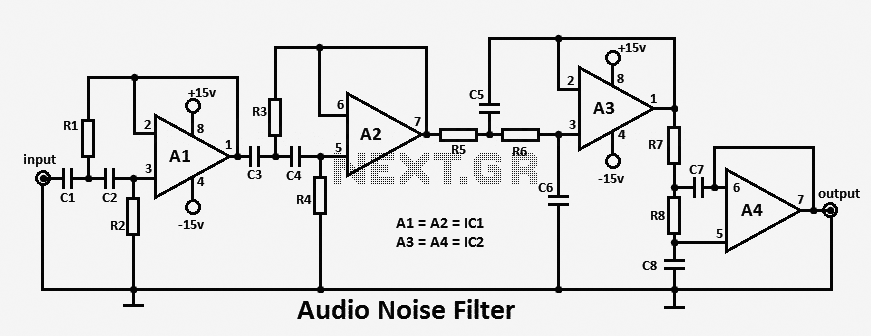
This audio noise filter circuit functions as a bandpass filter specifically designed for the audio frequency range. It effectively filters out unwanted signals that fall below or above the desired audio frequencies. The circuit comprises two filters: a low-pass filter and a high-pass filter configured in a cascade arrangement.
The audio noise filter circuit is essential in applications where clarity and quality of sound are paramount. By employing a low-pass filter, the circuit allows audio signals below a specified cutoff frequency to pass through while attenuating higher frequency noise. Conversely, the high-pass filter permits signals above a certain cutoff frequency to pass, thereby rejecting lower frequency interference. The cascade configuration enhances the overall filtering effect, ensuring that only the desired audio frequencies are transmitted.
In practical implementations, the low-pass filter can be designed using passive components such as resistors and capacitors or active components like operational amplifiers for better performance. The cutoff frequency of the low-pass filter is determined by the values of these components, allowing for customization based on the specific application requirements. Similarly, the high-pass filter is constructed using a complementary set of components, where the cutoff frequency is also adjustable.
The integration of both filters into a single circuit enables the creation of a robust audio processing unit that can be utilized in various devices, including audio mixers, amplifiers, and sound reinforcement systems. This configuration not only enhances sound quality but also minimizes the impact of external noise sources, resulting in a cleaner audio output. The design considerations for this circuit include component selection, frequency response, and impedance matching to ensure optimal performance across the intended audio frequency spectrum.This audio noise filter circuit is a bandpass filter for audio frequency band. It filters unwanted signals that are lower or higher than the audio frequencies. It has 2 filters: a low pass filter and a high pass filter in a cascade configur.. 🔗 External reference
The audio noise filter circuit is essential in applications where clarity and quality of sound are paramount. By employing a low-pass filter, the circuit allows audio signals below a specified cutoff frequency to pass through while attenuating higher frequency noise. Conversely, the high-pass filter permits signals above a certain cutoff frequency to pass, thereby rejecting lower frequency interference. The cascade configuration enhances the overall filtering effect, ensuring that only the desired audio frequencies are transmitted.
In practical implementations, the low-pass filter can be designed using passive components such as resistors and capacitors or active components like operational amplifiers for better performance. The cutoff frequency of the low-pass filter is determined by the values of these components, allowing for customization based on the specific application requirements. Similarly, the high-pass filter is constructed using a complementary set of components, where the cutoff frequency is also adjustable.
The integration of both filters into a single circuit enables the creation of a robust audio processing unit that can be utilized in various devices, including audio mixers, amplifiers, and sound reinforcement systems. This configuration not only enhances sound quality but also minimizes the impact of external noise sources, resulting in a cleaner audio output. The design considerations for this circuit include component selection, frequency response, and impedance matching to ensure optimal performance across the intended audio frequency spectrum.This audio noise filter circuit is a bandpass filter for audio frequency band. It filters unwanted signals that are lower or higher than the audio frequencies. It has 2 filters: a low pass filter and a high pass filter in a cascade configur.. 🔗 External reference
